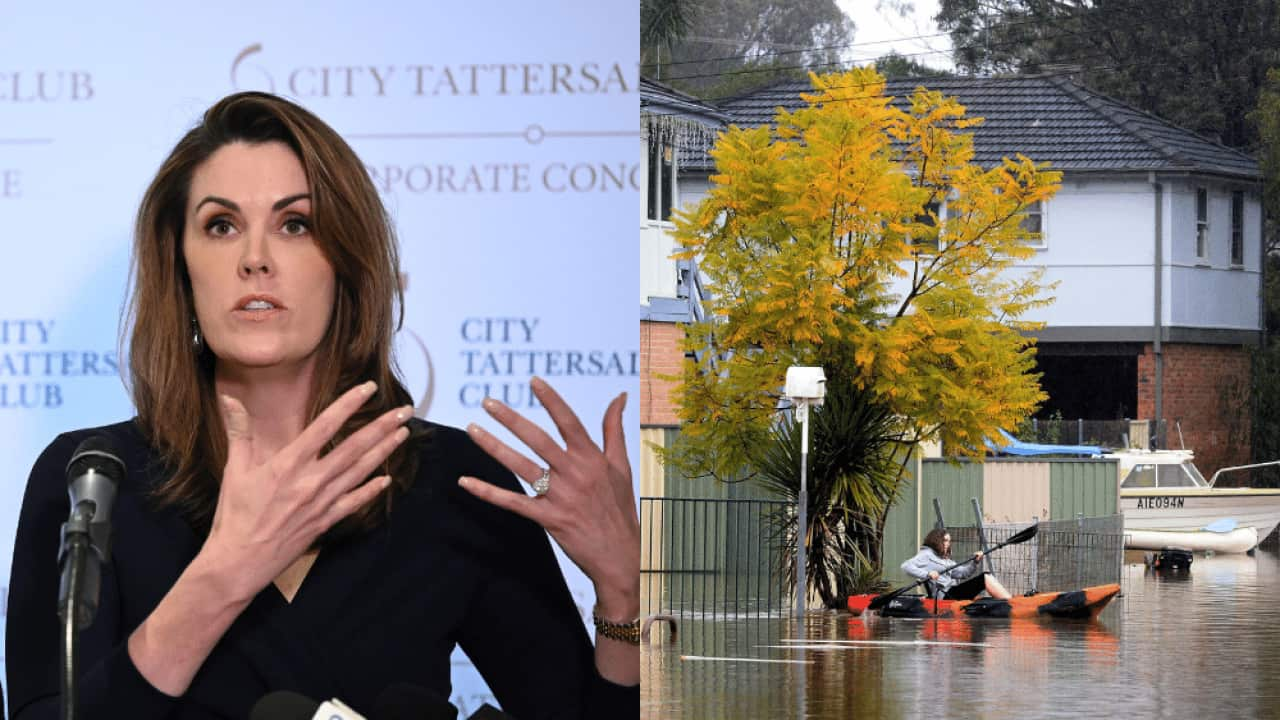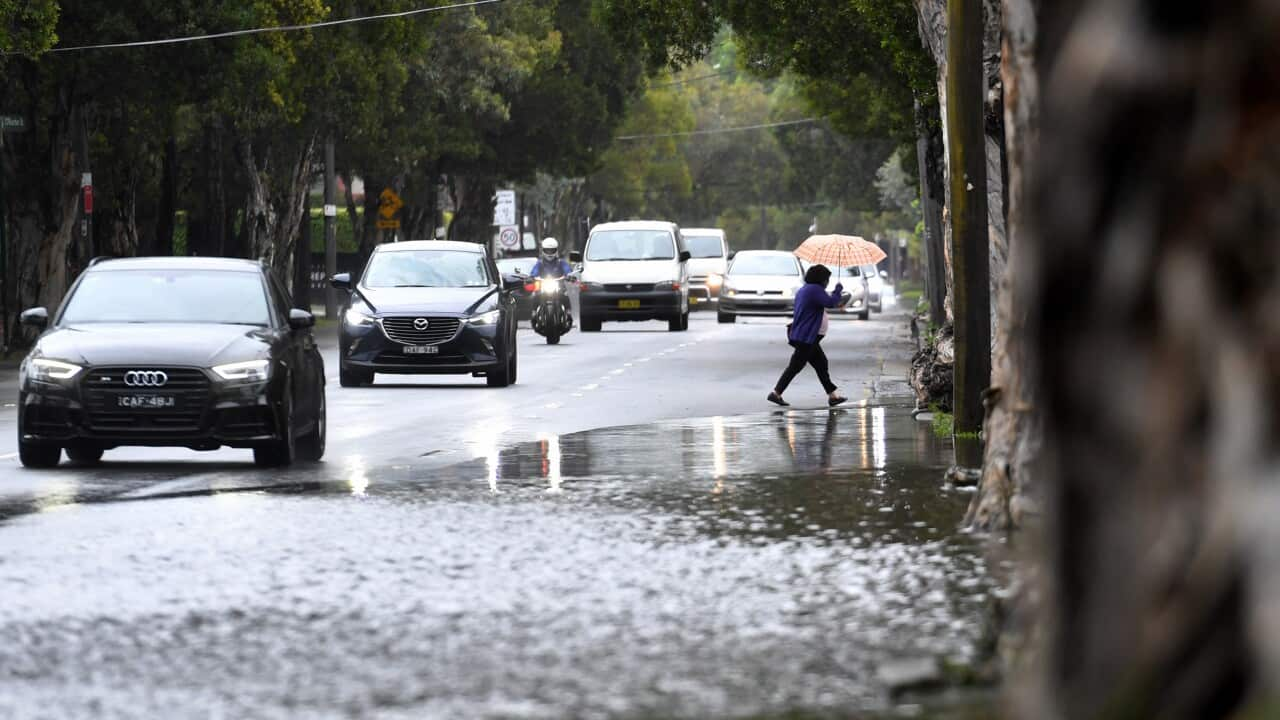A powerful weather system sent intense rainfall over the Hawkesbury-Nepean Valley in western Sydney for days last week. And for the fourth time in 18 months, heavy downpours brought on floods as water from a saturated landscape flowed into rivers and dams that were already full.
As Prime Minister Anthony Albanese visited Hawkesbury locals, once again ravaged by the deluge, he blamed a global failure to act on climate change for the floods that put at least 50,000 people under evacuation orders and warnings.
“The science told us that if we continued to not take action globally on climate change, then these events, extreme weather events, would be more often and more intense. And what we’re seeing, unfortunately, is that play out,” Mr Albanese said.
In a fierce rebuttal, Sky News host and former chief of staff to ex-Prime Minister Tony Abbott, Peta Credlin, wrote an opinion piece in Sydney's The Daily Telegraph in which she questioned the link between climate change and the severity of the floods.

The Windsor Bridge is submerged under floodwater from the swollen Hawkesbury River in Sydney's northwest on 4 July 2022. Source: AAP / BIANCA DE MARCHI
She wrote Windsor experienced a flood peak last week of 13.9m, but between 1809 and 1978 there were 10 occasions when floods at Windsor peaked over 14m.
The biggest flood Windsor has experienced was in 1867, when waters peaked at 19.7m.
“How can it be all down to climate change, if the worst flood happened more than 150 years ago?” Ms Credlin asked.
Politicians and commentators aside, what do the experts say?
Floods are a part of the Australian climate, but there's more to the story
Dr Jaci Brown, the research director for the Climate Science Centre at the CSIRO, told The Feed while people are often looking for a black and white answer as to whether climate change caused this year's unrelenting floods, the real answer is not that clear-cut.
"You can't be that specific," she said. "What we do see is a longer-term trend for increases in extreme rainfall events."
Dr Brown said it's fair to say Australia is a country prone to floods and has been recording floods for millions of years. But increasingly layered with the presence of several natural drivers of wetter conditions is climate change.

David Purdie from Morpeth in NSW surveying the road where his work excavation equipment is trapped in floodwaters on 12 July 2022. Source: AAP / DARREN PATEMAN
So far, the average global temperature has increased by 1.1C since 1880, with a majority of warming occurring from 1975, according to an ongoing temperature analysis led by scientists at NASA’s Goddard Institute for Space Studies (GISS).
In Australia, that temperature increase sits a little higher at around 1.44C, as noted by the 2020 State of the Climate report by the CSIRO and the Bureau of Meteorology.
Dr Andrew King, a climate scientist at the University of Melbourne, told The Feed the effect climate change has on atmospheric water retention as well as the natural process which pushes water vapour into the atmosphere is still the subject of a lot of research.
"It's incorrect to say that climate change has nothing to do with it. But it's also incorrect to say that climate change is the main factor behind the rainfall due to the floods — the truth is kind of somewhere in the middle," he said.
The State of the Climate report also noted climate extremes in Australia —such as extreme heat, heavy rainfall and coastal floods, fire weather and drought were becoming more common - and are projected to stay on this path as the climate warms.

A house cut off by water after major flooding in the Hunter Valley around Maitland in June 2007. Source: AAP / DEAN LEWINS
What Australia is seeing is in line with those projections, Dr Brown says.
"A rainfall event can then suck out that moisture and really give you a big downpour," she said.
The natural climate drivers for the recent wet conditions on the east coast reported by the Bureau of Meteorology include: the periodic cooling of the tropical Pacific Ocean known as La Niña, the periodic cooling of the western Indian Ocean (connected to La Niña), and a positive Southern Annular Mode which sees wind bring moist air from the Tasman Sea toward eastern Australia. All three promote rain.
Dr King told The Feed the previous deluges are also worsening the current flooding.
"Unfortunately, once you have flooding, it's more likely that you're going to get flooding again, in the next month or two, because the ground is saturated and waterlogged in places," Dr King said.
"Any rainfall really goes towards flooding, rather than kind of getting into the ground."
The exceptionally wet start to July that produced a month and a half's worth of rain in just four days has left Sydney on track for its wettest year on record.
The Hawkesbury River experienced its biggest flood since 1978 last week, peaking at 13.93m, 13cm higher than the March 2022 peak.
The baseline is changing
Ms Credlin asked: “How is reducing emissions going to reduce flood severity, if the worst flood happened at a time when Australia’s emissions were minimal and global CO2 concentrations were about 25 per cent less than now?”
Just last week, a study by the collective behind the World Weather Attribution group found the record flooding in Brazil in May, which displaced 25,000 people and killed at least 133 people, was worsened by climate change.
The group also found the torrential rain in South Africa in April, which killed over 400 people, had been exacerbated by climate change.

Jodie McCosker takes a break from cleaning out the bottom storey of her home, which was inundated by floodwaters in Millers Forest, near Newcastle, in NSW on 12 July 2022. Source: AAP / DARREN PATEMAN
“This is the new normal. This is the climate of now. The climate of now is not like the climate of the past, we need to figure out how we're going to deal with this new climate that we've got because it's not going away. And it's only going to get more extreme,” Dr Brown said.
Denying that the baseline is changing, she said, only slows the reaction to dealing with the conditions.
“We're going to have really dry events, we're going to have really wet events, and we need to start getting prepared for them to happen.”
With Reuters.











